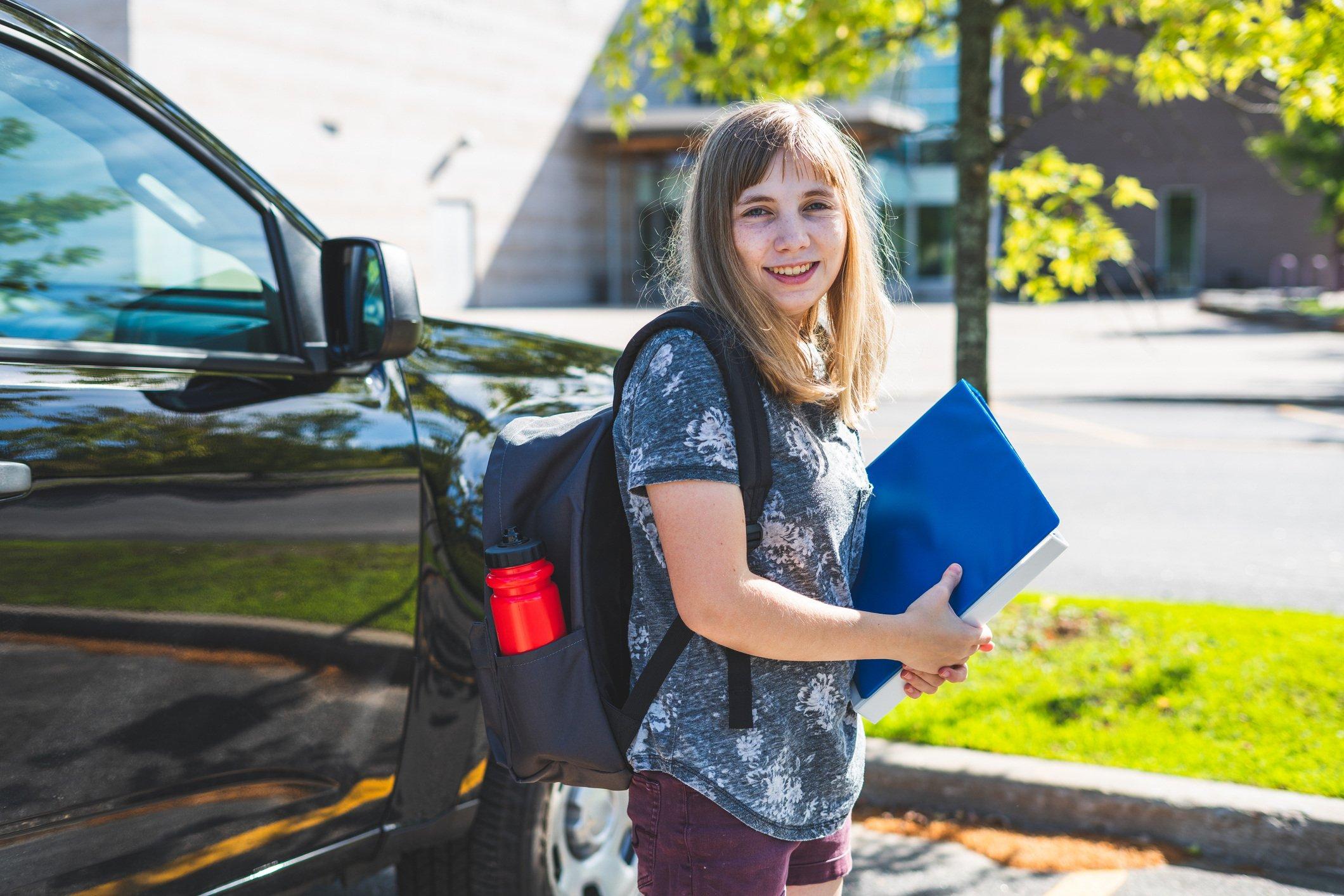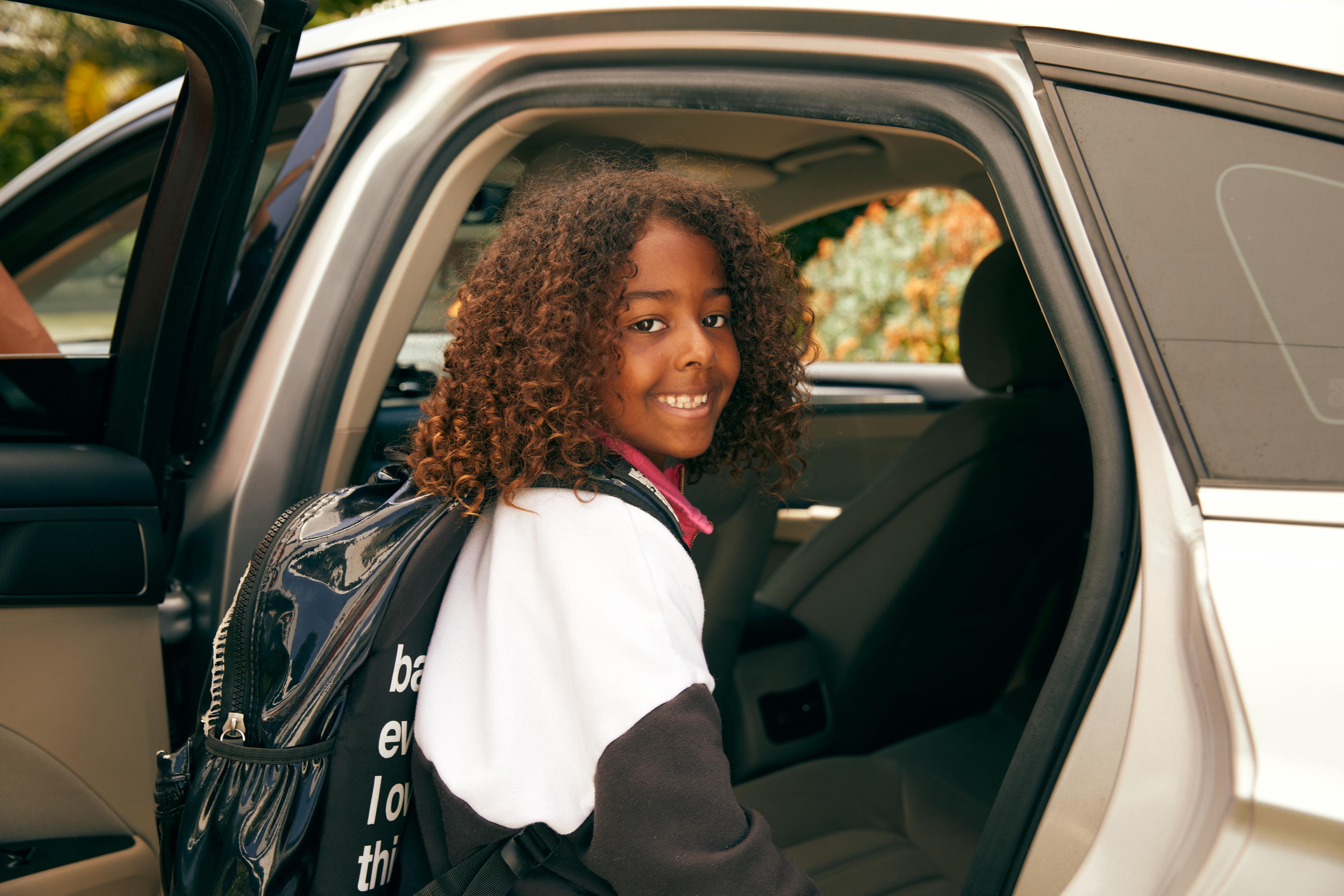What to Expect in Student Transportation for 2025
2025 Brings Shifts in School Transportation Options

In 2017, the education website Getting Smart published an article titled By 2025, Swarms of Self-Driving Vehicles Will Transport Students to Learning Sites, detailing what they foresaw as a disruption to school transportation.
While swarms of self-driving vehicles do not transport students to and from school, as the article suggests, their assessment that transportation is changing fast is 100% correct.
In this blog, we’ll share our insight into what school transportation trends and changes to expect in 2025.
Six School Transportation Trends Driving 2025
More Multimodal Transportation
The concept of multimodal transportation is gaining traction to provide students with greater flexibility and accessibility. By integrating various modes of transport — such as walking, biking, public transit, vans, and small vehicles — alongside school buses, districts can choose the most convenient and efficient options for their individual needs.
The school bus driver shortage is a big part of the move to multimodal transportation. Our 2024 State of School Transportation Report found that 91% of survey respondents said their districts have transportation limitations due to this driver shortage. Multimodal could mean having parents and guardians take students to school, students taking public transit, or supplemental transportation like HopSkipDrive’s network of small vehicles.
Multimodal transportation reduces reliance on only buses. It can improve education access for students in underserved areas with limited transportation options. Through innovative partnerships with public transit agencies and supplemental transportation services, school districts can create comprehensive transportation networks that cater to the diverse needs of their student populations.
School Transportation Will Be Crucial for Educational Equity
Our State of School Transportation Report also affirmed that transportation is crucial to educational equity; 52% of survey respondents noted a link between access to transportation and educational equity.
The number of vulnerable populations who’ve historically been marginalized when it comes to equitable education is growing.
Students With IEPs
Under the Individuals with Disabilities Act (IDEA), every student who receives special education services must be served by an individualized education program (IEP), which can cover the most beneficial ways for these students to get to and from school.
Recently, the number of students with IEPs has increased, driven by better identification of disabilities, increased awareness of the services by parents and guardians, and reduced stigmas around special education and especially mental health. The number of students with IEPs is up 13% in the past decade, and only expected to increase.
Students Experiencing Homelessness
Students experiencing homelessness are another vulnerable population that’s growing. Department of Education data shows that in 2023, homelessness among public school students went up 10% from 2021 and 77% since 2007.
Chronically Absent Students
Chronic absenteeism, when a student misses at least 10% of the school year for any reason (which is associated with lower test scores and graduation rates, amongst other negative impacts), is also growing. While a problem for years, the issue was exacerbated during the pandemic, with the number of chronically absent students doubling between 2019 and 2022. Students who live below the poverty line are more likely to be chronically absent, often due to lack of school transportation.
Providing vulnerable students with reliable transportation can help them receive the equitable education they deserve. As School Bus Ride published in a 2024 piece:
Whether revising routes to reach students in underserved areas, accommodating students with disabilities, or addressing the needs of students who are being moved from place to place (such as students experiencing homelessness or in foster care), transportation teams are on the front lines, bearing witness to the complexities of student transportation needs firsthand.
We’ll increasingly see school transportation teams involved in crafting the strategies districts need to ensure that all students have equitable access to the education they deserve.
Read more about the link between transportation, student success, and equitable education here.
An Increase in Electric Vehicles
The transition to electric school buses is gaining momentum, driven by their numerous benefits. Beyond the significant reduction in greenhouse gas emissions and improved air quality, electric buses offer students a quieter and more comfortable ride. Eliminating engine noise creates a more conducive environment for learning and reduces distractions. Additionally, electric buses can have lower operating and maintenance costs in the long term, potentially benefiting school districts in the long run.
According to The World Resource Institute (WRI), “In the U.S., there now are nearly 5,000 electric school buses serving approximately 254,000 students in 49 states, Washington, D.C., American Samoa, Puerto Rico, and seven tribal schools,” many of which are funded by the Environmental Protection Agency’s (EPA) Clean School Bus Program. WCI also reports that there’s been a 500% increase in U.S. school districts using electric school buses since 2021.
Advancements in battery technology are extending the range and reducing charging times, further enhancing the viability of electric school buses. As charging infrastructure expands and costs continue to decline, we can anticipate a significant increase in the adoption of electric school buses in 2025 and beyond.
It’s not just school buses going green. Replacing underutilized bus routes with multi-passenger sedan or SUV rides like we help do here at HopSkipDrive offers cost savings and reduced environmental impact.
WiFi on More School Vehicles
Home internet access is a big issue for today’s students. Currently, nearly one-fourth of students don’t have home access to high-speed internet, which is detrimental when considering how today’s students study and complete their work.
Outfitting buses and other school vehicles with mobile WiFi is revolutionizing how students utilize what can be longer commute times. With access to high-speed internet, students can stay connected with their teachers and classmates, complete assignments, and access educational resources online. This transforms travel time into valuable learning time, particularly for students with limited internet connectivity at home.
We can expect even greater integration of digital tools and resources into the student transportation experience as technology advances.
Reliable transportation is another way to grant students access to education. Students who can’t access the internet at home must be in school. Learn about the connection between transportation and reducing chronic absenteeism here.
Transportation Optimization Software
Transportation optimization technology seeks to reimagine transportation routes. New software, like HopSkipDrive’s RouteWise AI™, can create the most efficient routes by analyzing student ridership patterns, traffic conditions, and road closures, reducing travel times and fuel consumption.
This benefits students by placing them in the right vehicle — bus, van, car, etc. — minimizing their time on the road, maximizing classroom time, and contributing to environmental sustainability by reducing carbon emissions.
At HopSkipDrive, RouteWise AI, our revolutionary technology offering for student transportation planning, has helped Colorado Springs District 11:
Improve efficiency with a 46% increase in their share of high-utilization bus routes
Improve on-time arrivals from 85% to 99%, leading to better educational outcomes for D11 students
Increase driver pay by using savings to fund a significant driver raise
Identify opportunities to reduce their capital budget by 40% over 10 years
Reduce carbon emissions by 31%
A Spotlight on Safety
Safety remains a paramount concern in student transportation. It’s on the minds of parents, guardians, educators, transportation professionals, and students.
Unsurprisingly, in a recent HopSkipDrive survey of school and district staff, 76% identified student safety as a top priority for school transportation. When School Bus Fleet asked students about their top transportation concerns heading into 2025, 17.3% said safety. As School Bus Fleet writes,
"In terms of safety, we all know that illegal stop-arm passings has bec,ome a significant issue, with a recent NASDPTS survey showing a 4% rise and too many fatal accidents as a result. Add to that speeding from other motorists, distracted driving, concerns around drug testing changes, and the cost of technology upgrades, and it’s no wonder there’s hesitation."
In 2025, we can expect a heightened emphasis on safety features and protocols and calls for more safety features and products. Seat belts, GPS tracking, and video surveillance are becoming standard in school buses, providing extra student protection, but there’s always more to be done.
At HopSkipDrive safety is our top priority — 99.7% of 2023 HopSkipDrive rides were completed without incident. We believe transparency about safety on our platform is the right thing to do; after all, we can’t manage what we can’t measure. This is why we release our annual Safety Report. We also relentlessly invest in safety, rolling out new safety-based features annually and continually strengthening our Safe Ride Technology.
It's an exciting time to be in school transportation. These are all good changes that will help us move towards a more equitable, accessible, student-centric future.
Ready to start strategizing to ensure your school transportation strategy is future ready? Set up a chat with the HopSkipDrive team today!


